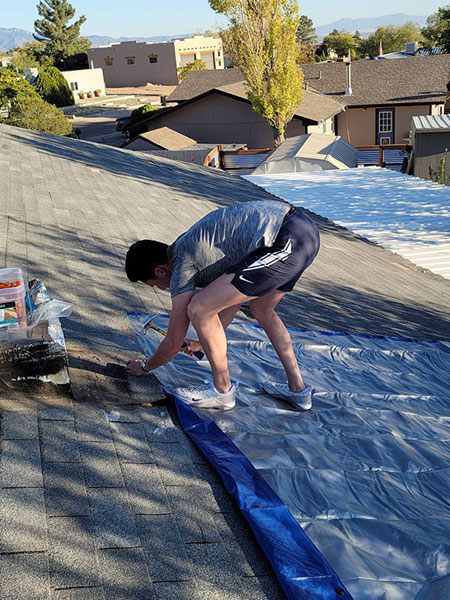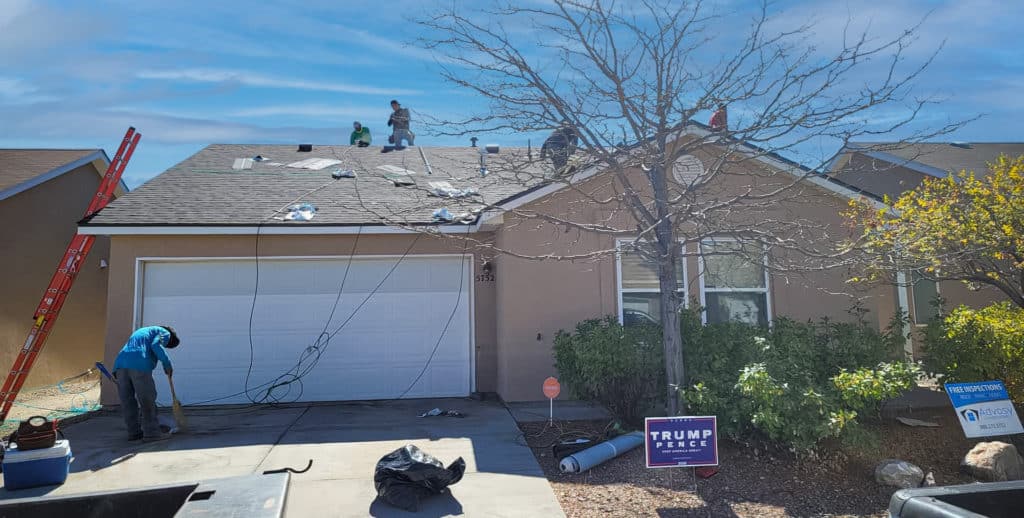Homeowners often attempt to repair or replace their own roofing systems without the assistance of a professional. This is a risky proposition as many mistakes can be made which could end up costing more money and time in the long run. Understanding what the common pitfalls are will help ensure that homeowners make informed decisions when it comes to repairing or replacing their roofs.
This article examines some of the most common mistakes homeowners make when attempting to fix their own roofs. The consequences for making an incorrect decision about one’s roof can be costly, both financially and structurally. For example, if a homeowner has inadequate knowledge on proper installation techniques, they may not adequately secure shingles and flashing correctly causing eventual water damage.
Furthermore, this kind of mistake can lead to expensive repairs down the line due to mold growth resulting from moisture accumulation caused by improper sealant use. Understanding these potential problems ahead of time will allow homeowners to avoid them before any serious damage occurs.
Not Ascertaining The Extent Of The Damage
Many homeowners attempt to fix their own roofs without realizing the extent of damage. This often leads to further problems as they may not be aware of all the underlying issues that need to be addressed. The process should begin by assessing the amount and type of damage, which can take time if the roof is large or complex in structure.
In addition, it is important for homeowners to identify any possible safety hazards before attempting repairs on a roof such as loose shingles, slippery surfaces or broken tiles. If these are present, proper precautions must be taken in order to prevent serious injury from occurring during work on the roof.
Additionally, it is essential that any tools being used are sharp and functioning properly since dull blades can cause uneven cuts when replacing materials on a roof’s surface. Taking the necessary steps towards determining exactly what needs repair prior to beginning any DIY projects will save time and money in the long run.

Not Understanding Proper Installation Techniques
Homeowners may face challenges when attempting to fix their own roofs due to a lack of understanding about proper installation techniques. Incorrect installation can cause extensive damage that could lead to an expensive replacement, as well as water and air leaks.
When homeowners attempt roofing repairs on their own, they should research the best practices for installing shingles or tiles so that those materials remain securely in place. Failure to properly secure such material is one of the most common mistakes made by DIYers who are trying to repair their own rooftop without professional help.
The wrong type of nails or incorrect nail placement may cause issues with future maintenance and the lifespan of the roof itself. In addition, using inadequate flashing around chimneys, vents and other protrusions will put these areas at risk for leaking moisture into the home’s interior spaces.
Taking time to properly install flashing and securing all materials correctly can reduce unexpected headaches down the road while helping homeowners avoid costly replacements later.
Neglecting To Check For Signs Of Leaks
When attempting to fix a roof, homeowners often overlook signs of leaks. This can have disastrous consequences for the integrity and safety of a home’s roof, as well as its occupants.
Leaks can cause damage to structures such as walls, ceilings, insulation and floors – not just on the exterior but also internally within the house itself. Additionally, if left unchecked, water damage caused by leaks may foster an environment conducive to mold growth which can be hazardous to one’s health.
Checking for signs of leak is therefore essential when conducting any sort of maintenance or repair work on a roof. Signs that indicate possible leakage include discoloration or staining on either the interior or exterior surfaces of the roof; wet spots near vents, skylights and chimneys; dripping from seams in metal roofs; sagging shingles; missing granules from asphalt shingles; rust stains around nails and screws; buckling at joints between sections of decking material; softening around flashings where two different materials come together; and loose mortar around brick chimneys.
Homeowners should inspect their roofs regularly for these indicators in order to avoid future problems with their rooftops.
Choosing The Wrong Materials For The Job
A mistake often made by homeowners attempting to fix their own roofs is the selection of unsuitable materials for the job.
A wide variety of tools and supplies are available, but they must be chosen with care depending on the type of roof being fixed.
Poor-quality products can quickly become a hindrance rather than an aid when it comes to repairs.
In addition, incompatible components may cause more damage or lead to a weakened structure in the long run.
The right supplies not only make things easier during installation but also ensure that repairs will last longer and provide better protection against future problems.
When selecting materials, consider factors such as environmental conditions and building regulations in your area.
It is best to seek expert advice if you are unsure about what items will work best for your particular project.
Taking these steps can save time and money while helping to prevent costly mistakes from occurring down the line.
Not Obtaining Adequate Permits And Inspections
The importance of obtaining adequate permits and inspections when attempting to undertake roof repairs cannot be overstated. Neglecting the necessary paperwork can not only lead to an incomplete repair job, but also a substantial fine from local building authorities. Indeed, it is essential that homeowners familiarize themselves with all regulations pertaining to residential roof construction in their area before beginning any work on their own roofs.
In some cases, such as for more complex jobs involving structural changes or those that require specialized materials, certain permits are mandatory – meaning without them no repair may take place regardless of the homeowner’s wishes.
Moreover, professional inspections must be carried out both prior to starting work and upon completion of the project; these serve to ensure that all safety protocols have been adhered to and that the newly-repaired structure meets regulatory standards.
In short, proper documentation is key when fixing one’s own roof.

Not Using The Correct Tools For The Job
Without the right tools and materials, attempting to fix a roof can be an exercise in futility. An inexperienced or ill-equipped homeowner will find themselves unable to properly address issues with their roof, which may lead to further damage if not addressed correctly. In this regard, having the correct tools available is essential for any home repair project involving a roof.
The most common tool used when repairing roofs is a hammer, as it allows for nails to be driven into wood surfaces without causing too much damage. Additionally, tarps are often necessary for protecting the existing shingles from additional wear and tear during repairs.
Other items such as ladders, safety harnesses, safety goggles, and gloves should also be considered before beginning any sort of DIY roof repair job. Having these items readily available can help ensure that the job is done safely and effectively. When combined with expertise and knowledge of proper techniques, even complex projects can be completed quickly and efficiently by homeowners who take the time to equip themselves accordingly beforehand.
Failing To Follow Manufacturer Instructions
When attempting to repair a roof, it is essential not to overlook the manufacturer’s instructions. Doing so could lead to costly and time-consuming repairs down the line.
Understanding how to properly install or repair one’s roof will help ensure longevity and proper protection of the home. It is vital for homeowners to take their time when reading through manufacturer instructions before beginning any DIY projects on their roofs.
Ensuring that all steps are followed correctly can save money in both materials and labor costs associated with fixing an improperly installed roof. By taking these precautionary measures and closely following directions, homeowners can rest assured knowing they have done everything they can do to ensure their safety as well as protect their investments.
Conclusion
The consequences of making mistakes while attempting to fix a roof can prove costly in terms of time, money and effort. Therefore, it is important to be aware of the common errors made by homeowners when trying to repair their own roofs.
Knowing what not to do can help ensure that repairs are done correctly and safely, helping you avoid further problems down the road.
It is also beneficial for individuals who want to attempt repairing their own roofs to research materials needed, techniques involved and permits required prior to beginning any project.
Following these guidelines will increase the likelihood of successfully fixing your roof without having to hire professional assistance.


